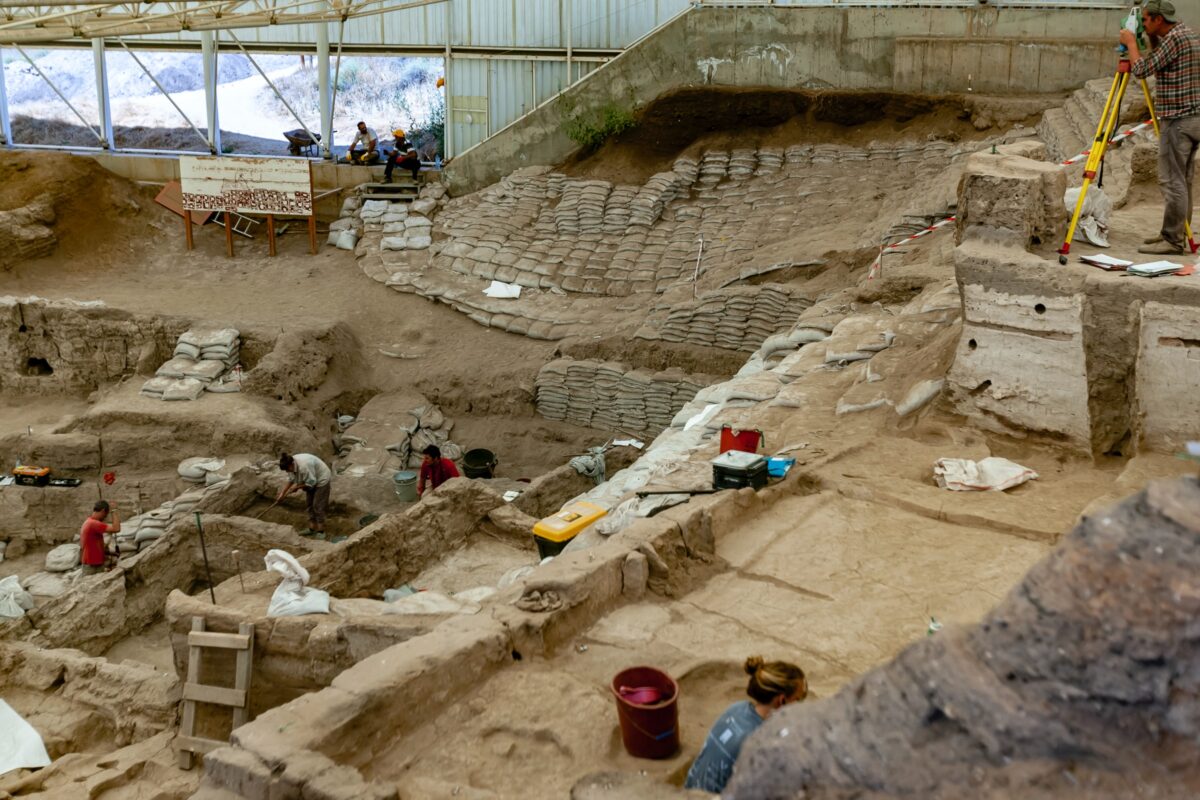A genetic analysis of a melon found in Sudan may point to the wild fruit that gave rise to one of summertime’s sweetest treats.
About 4,300 years ago, someone drew a melon on the wall of a tomb in Egypt. It’s big, fat, green and generously striped: Everything you’d expect a watermelon to be. It’s next to grapes and other fruits, suggesting it was eaten back then as we eat watermelon now, raw and for its sweet taste.
This detail of a painting in the tomb of Khnumhotep in Saqqara was a puzzle. While scientists believed that watermelon’s wild ancestors came from the African continent, no one knew of a wild watermelon anywhere near the Nile Valley. Where did this melon come from?
One theory held that the West African egusi melon, grown for its seeds, might be a descendant of watermelon’s most recent wild ancestor, suggesting watermelon’s origins were on that side of the continent. But a paper published Monday in Proceedings of the National Academies of Sciences finds that the small, round Kordofan melon, native to the Kordofan region of Sudan, is much more closely genetically related to our modern watermelon.
The find suggests that watermelon is East African, and the Kordofan melon’s genetics could be ripe pickings for breeders hoping to improve future watermelon varieties. Because Kordofan is not far from Egypt, it may also suggest an origin for the mysterious ovoid green fruit painted on that tomb wall.The discovery required digging into forgotten corners of African botany, said Guillaume Chomicki, a botanist at the University of Sheffield in England and an author of the new paper.
The Kordofan melon, which is about six inches wide, white on the inside and a pale, gently striated green on the outside, has long been grown by farmers in what is now Sudan. In the late 1800s, a German botanist wrote that it might be a progenitor of the modern watermelon. Later, Soviet scientists wondered the same thing.
Most members of the watermelon’s genus, Citrullus, have bitter flesh. But the Kordofan melon is sweet. That suggested it or one of its ancestors could be the source of the modern watermelon.
To see where it fell in the watermelon family tree, the researchers behind the current paper sequenced the genomes of seven Citrullus species. They found that the Kordofan melon had much more overlap with the modern variety than with the West African egusi or any other melons, suggesting that they are more closely related.“We are really confident in saying this is the closest relative,” Dr. Chomicki said.
The Kordofan melon and the modern watermelon most likely arose from a long-ago wild melon, the results suggest. Farmers would have realized this melon was sweeter than others and bred it into new, tasty varieties.
Researchers still don’t know, however, who took this wild melon ancestor and turned it into what’s on the tomb wall in Saqqara, or set it on the path to what we eat today. Dr. Chomicki and his colleagues are planning to sequence the genomes of melon seeds found in African archaeological sites to try to determine where and when humans coaxed early watermelons into a more edible form.
The wild relatives of domesticated crops can be sources of fresh, interesting genes for breeders. A new color, a hardy resistance to drought or a new way to fight off blight are the kinds of treasures wild plants can bring to the gene pool of domesticated varieties.
Even varieties that are closer to the source, as the Kordofan melon may be, can help. The new study found that it has different forms of genes related to disease resistance than the standard watermelon.
It’s not clear if there are still any wild versions of the Kordofan melon or its relatives growing in Sudan, Dr. Chomicki said. In the 1800s, the German botanist wrote, there were patches of the melons growing wild. But this region, which is near Darfur, is now difficult for researchers to gain access to because of violence.
Many wild relatives of crop plants are facing extinction around the world, a result of human disturbance and climate change. When they go, they take opportunities to improve domestic varieties with them.
Dr. Chomicki has never tasted the Kordofan melon — for their analysis, the team members had to rely on samples collected by others. The tales of its sweet flavor, the telltale sign that it may have had a story to tell about modern watermelon, are still secondhand.
“But I still have some seeds,” he said, “so I will plant them and see.”




